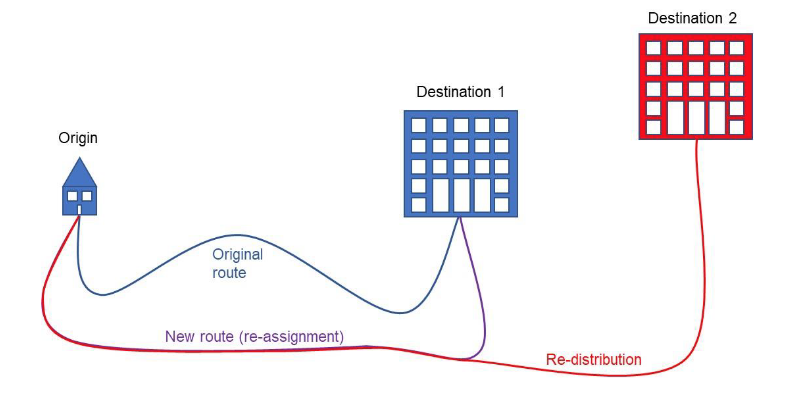Induced traffic is the additional traffic that arises from investment to increase road capacity. The usual reason to increase capacity is to relieve congestion. The intended outcome is that journeys are faster and easier. Yet this can lead to more frequent or longer car trips, changes to route or destination, or mode switching from public transport. All these changes lead to more traffic on the network.
The problem with induced traffic is that the more of it there is, the less the savings in travel time, which are treated as the main economic benefit of investment. So, the magnitude of induced traffic is of interest, prompting the Department of Transport to commission a study by consultants WSP and RAND Europe of options to improve its measurement. Two broad approaches were identified: econometric analysis that quantifies the relation between road capacity changes and observed traffic levels over time; and Before and After (B&A) studies that compare traffic before and after particular interventions.
The disadvantage of the econometric approach is that it generates an aggregate measure that does not indicate the components of induced traffic. B&A studies are more illuminating and could be improved by use of mobile phone network data (MND) to quantify changes to travel behaviour. MND allows an understanding of origins and destinations of trips, before and after an intervention. Large samples of road users are available, which would enable distinction to be made between the various kinds of change in travel behaviour. Transport for London has developed a multi-modal strategic transport model that estimates demand from MND.
One possibility not considered in the WSP/RAND study would be to carry out a sample survey of users of the road network, before and after an intervention, identifying changes in travel behaviour over time. This could employ seven-day travel diaries as for the National Travel Survey, or GPS to track travel patterns via a smartphone app. Studies of this kind, known as longitudinal studies, are well established in medicine and the social sciences. Much current research into the impact of Covid-19 is longitudinal, for instance following the immune response to vaccination over time. However, longitudinal studies of travel behaviour are rare, although they have the potential to understand the impact of investments in far more illuminating detail than is possible with conventional before and after traffic counts.
The WSP/RAND study concludes that all components of induced travel can be represented in the standard four-stage transport model, except that arising from changes to land use, which may have a substantial impact. However, the study did not consider the implications of induced traffic for the economic analysis of road investments, which routinely employs the output of a traffic model (including induced traffic effects) as input to an economic model. This is usually the DfT’s TUBA model, which generates monetary values of the time savings and other benefits/disbenefits. The net present value of the benefits is then compared with the investment costs to yield a benefit-cost ratio, important for investment decisions.
The phenomenon of induced traffic was recognised in a landmark 1994 report by the Standing Advisory Committee on Trunk Road Assessment (SACTRA). It is remarkable how little progress has been made in understanding its origins and incorporating this into modelling and economic appraisal. A cynic might say that this is because induced traffic undercuts the economic case for a road investment where the main benefit is supposed to be travel time savings, and so is yet a further headwind for the DfT’s £27 billion road investment programme. My own analysis of the widening of the M25 J23-27 showed that induced traffic, largely arising from rerouted local trips, was substantially greater than forecast and wiped out the economic benefits expected to accrue to longer distance business users. This is likely to be typical of investment to add capacity near densely populated urban areas where local commuters and others compete for road space with long distance business users. Standard traffic models are biased against fully recognising induced traffic.
The concept of induced traffic as an aggregate measure is now obsolete. Instead, we need to focus on how travel behaviour actually changes as the result of an intervention, and then work out how to value those behaviour changes. If an investment allows travel time to be saved, then monetary value can be ascribed according to established methods. However, we lack methodology for valuing longer trips to more distant destinations, motivated by the greater value of access to goods or services. Increased access is the real benefit of transport investment.
The above blog post was the basis for an article in Local Transport Today 836, 16 December 2021.


[…] traffic congestion and to foster connectivity between cities for mutual economic benefit. However, induced traffic arising from new capacity tends to restore congestion to what it had been, reducing predicted […]
[…] the M25 between junctions 23 and 27. One general explanation is the underestimation of the scale of induced traffic . Induced traffic reduces travel time savings, supposed main economic benefits of investment, which […]